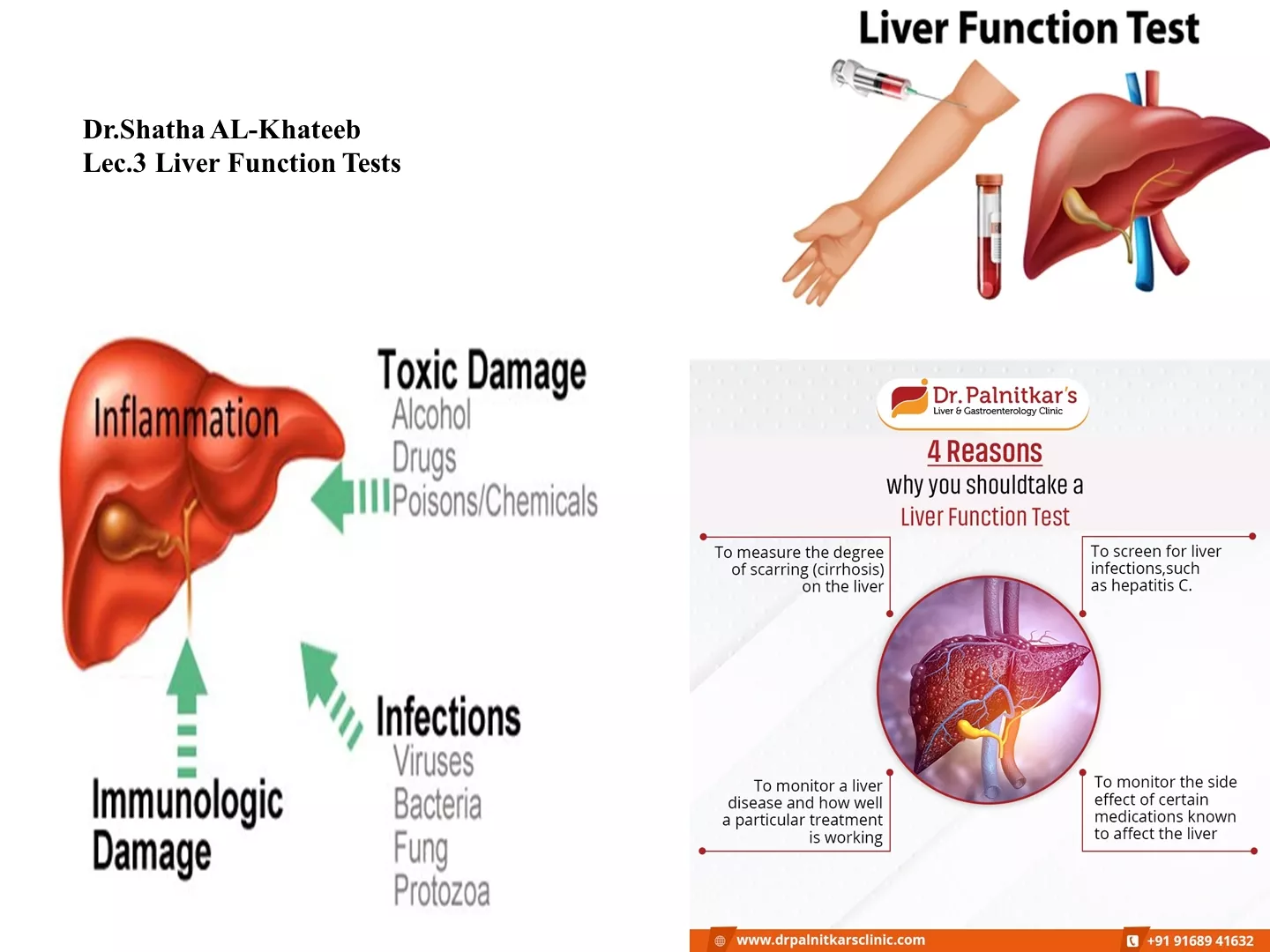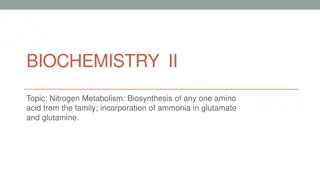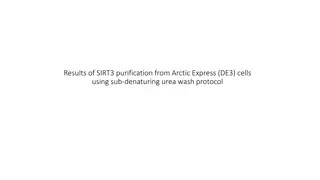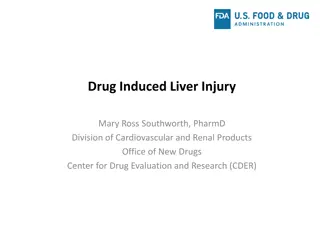Urea Biosynthesis and the Krebs-Henseleit Cycle in the Liver
Urea is synthesized in the liver through a series of enzymatic steps known as the urea cycle or Krebs-Henseleit cycle. This process involves converting toxic ammonia into urea, a less toxic and water-soluble compound that can be easily excreted in urine. The liver plays a crucial role in urea biosynthesis, with specific enzymes catalyzing each step of the cycle. While other organs like the kidneys and brain have limited involvement in the urea cycle, the majority of the process occurs in the liver. Understanding the steps involved in urea biosynthesis is essential in preventing ammonia intoxication and maintaining overall metabolic health.
Download Presentation

Please find below an Image/Link to download the presentation.
The content on the website is provided AS IS for your information and personal use only. It may not be sold, licensed, or shared on other websites without obtaining consent from the author. Download presentation by click this link. If you encounter any issues during the download, it is possible that the publisher has removed the file from their server.
E N D
Presentation Transcript
Urea Formation (Krebs-Henseleit cycle) Ammonia is highly toxic to the central nervous system It is converted to urea, which is much less toxic, water soluble and easily excreted in urine.
The liver is the site of urea biosynthesis. Urea biosynthesis occurs by urea cycle (Krebs Hensleit cycle) in five steps by five enzymes. Any defect in one of these enzymes leads to ammonia intoxication The first 2 steps occur in mitochondria, while the last 3 steps occur in cytoplasm
Note Other Organs Kidneys: Urea cycle operates in a limited extent. Kidney can form up to arginine but cannot form urea, as enzyme arginase is absent in kidney tissues. Brain: Brain can synthesis urea from citrulline, but lacks the enzyme for forming citrulline from ornithine. Thus, neither the kidneys nor the brain can form urea in significant amounts. Location of enzymes: It is partly mitochondrial and partly cytosolic. One mol. of NH3 and one mol. of CO2 are converted to one mol. of urea for each turn of the cycle and orinithine is regenerated at the end, which actsas a catalytic agent. The overall process in each turn of cycle requires 3 mols of ATP.
Steps of Urea Biosynthesis Biosynthesis of carbamoyl phosphate One molecule of ammonia condenses with CO2 in the presence of two molecules of ATP to form carbamoyl phosphate. The reaction is catalyzed by the mitochondrial enzyme carbamoyl phosphate synthetase-I
2-Formation of citrulline This step occurs in mitochondria. It is catalyzed by ornithine transcarbamoylase
3-Formation of argininosuccinate This step occurs in cytoplasm. It is catalyzed by argininosuccinate synthetase . It utilizes one ATP
4- Cleavage of argininosuccinate This step occurs in cytoplasm. It is catalyzed by argininosuccinase enzyme. Argininosuccinate is cleaved into arginine and fumarate. Fumarate produced is used to regenerate aspartic acid again
5-Cleavage of arginine This step occurs in cytoplasm. It is catalyzed by arginase enzyme Arginine is cleaved to urea and ornithine
Regulation of urea cycle The major regulatory step is catalyzed by enzyme carbamoyl phosphate synthetase-I (CPS-I )where the positive effector is N- acetyl glutamate (NAG). It is formed from glutamate and acetyl CoA . Arginine is an activator of NAG synthase.
Disorders of Urea Cycle Deficiency of any of the urea cycle enzymes would result in hyperammonemia. When the block is in one of the earlier steps, the condition is more severe, since ammonia itself accumulates. Deficiencies of later enzymes result in the accumulation of other intermediates, which are less toxic and hence symptoms are less.
Disorders of urea cycle is characterized by: hyperammonemia
Disorders of urea cycle is characterized by: encephalopathy respiratory alkalosis.
Clinical symptoms vomiting irritability lethargy and severe mental retardation. Infants appear normal at birth, but within days progressive lethargy.
Clinical significance of urea 1-Normal level: the normal concentration of blood plasma in healthy adult ranges from 20-40 mg/dl 2- Increase levels Increases in blood urea may occur in a number of diseases in addition to those in which the kidneys are primarily involved. The causes can be classified as: Prerenal, Renal, and Postrenal
Prerenal Most important are conditions in which plasma vol / body-fluid are reduced: Salt and water depletion, Severe and protracted vomiting as in pyloric and intestinal obstruction, Severe and prolonged diarrhea, Haematemesis, Haemorrhage and shock; shock due to severe burns, Ulcerative colitis with severe chloride loss, In crisis of Addison s disease (hypoadrenalism).
(b) Renal The blood urea can be increased in all forms of kidney diseases like: In acute glomerulonephritis. In early stages of type II nephritis (nephrosis) the blood urea may not be increased, but in later stages with renal failure, blood urea rises. Other conditions are malignant nephrosclerosis, chronic pyelonephritis and mercurial poisoning. In diseases such as hydronephrosis, renal tuberculosis; small increases are seen but depends on extent of kidney damage.
c) Postrenal Diseases These lead to increase in blood urea, when there is obstruction to urine flow. Causes: Enlargement of prostate, Stones in urinary tract, Stricture of the urethra, Tumors of the bladder affecting urinary flow. Note Increase in blood urea above normal is called uraemia.
3- Decreased levels: are rare, but may be seen in: some cases of severe liver damage. physiological condition: blood urea is lower in pregnancy than in normal non pregnant women.























